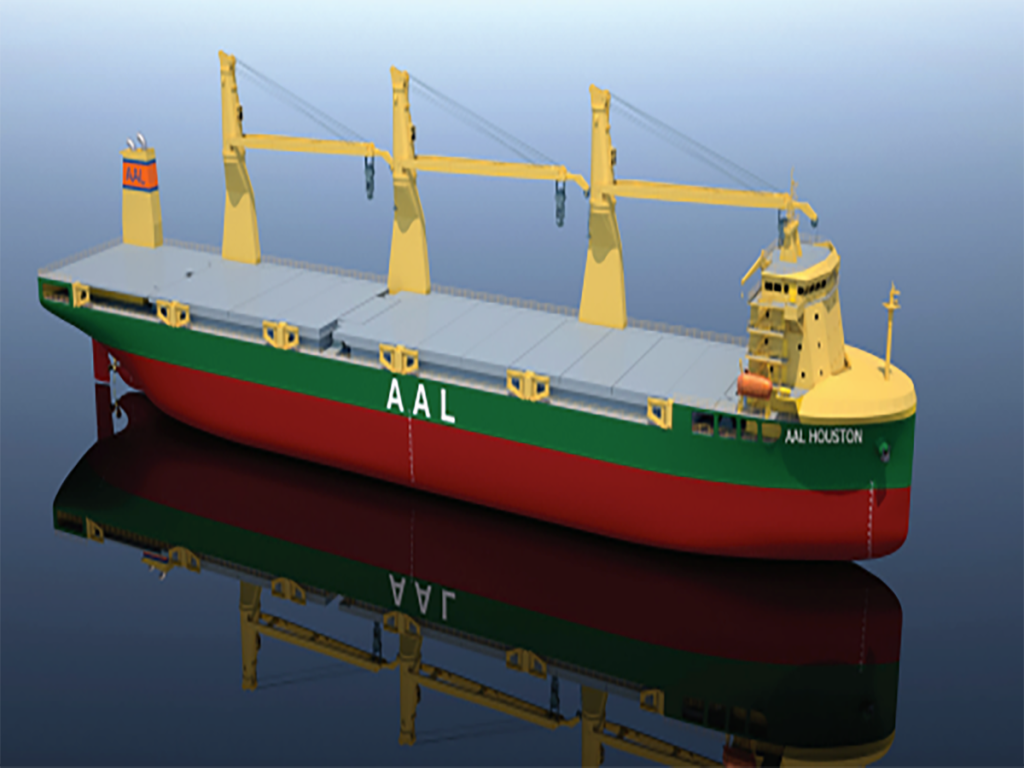Felix Schoeller, Commercial Director, AAL Shipping (AAL) discusses new ships and prospects for the project sector.
AJOT: In January, AAL completed a project move of industrial tower components for a refinery project from South Korea to the U.S West Coast, Port of Everett, Washington. The complicated move begs a number of related questions.
Schoeller: The oil and gas project sector has been very quiet the past few years, many projects have been delayed or canceled altogether due to lower oil prices. Also, the global push for renewable energy, driven by fiscal governmental support encourages local industries to help them meet national emissions targets. Now with the rise in oil and gas prices, many projects are back on the map. We expect to see project growth mainly in the Middle East and North America. We expect an additional round of upgraded facilities over the next 10-years. After that time which energy production will shift mostly to renewable energy such as wind and hydrogen, etc. Natural gas has a longer lifespan.
AJOT: How have the COVID-19 restrictions complicated the project/breakbulk sector business?

Schoeller: For shipowners such as AAL there have been two major issues. Crew welfare onboard the vessels: crew changes have been not possible for the greater part of 2020 and 2021 due to travel restrictions, tight port regulations, and vessel schedule delays. This situation improved in the second half of 2021, however, AAL and our technical manager CSM have done well to not only support our crew throughout the pandemic but to keep our fleet and customer cargoes moving and with as minimal disruption as possible.
The other main limiting factor has been the disruption of the supply chain on land. Due to covid, there have been labor shortages, a general slowdown of all landside operations such as truckers, stevedores, port operations, etc. Hence the reason berthing and port operations have been slow and port congestion has been a recurring issue. Finally, due to travel restrictions, AAL was not able to send our own ‘super cargoes’ (cargo superintendents) to the ships to supervise cargo ops. Luckily, we managed to source capable local contractors to work with us in many key load and discharge regions.
AJOT: AAL runs a number of interconnected trade routes [i.e., the Asia-Americas Trade Route was used for the refinery project move] how did the business philosophy evolve to developing a “trade routes” liner system for your breakbulk/project operations? And how does that style of operation influence fleet deployment and the fleet portfolio?

Schoeller: Since 1995, AAL has always focused on the larger tonnage and started as a breakbulk liner operator between Asia and Australia. AAL has over the past ten years specifically targeted large MPP tonnage between 25-33,000 dwt and grown our fleet from 14 to 21 owned vessels in the ‘mega MPV class. These vessels are perfect for long-haul trades. With the heavy-lift capacity of the fleet and strong cargo intake capability, we offer project shippers reliable and competitive project transport solutions on all key trades that are flexible enough to adjust to individual project needs. With 6 new buildings on the way and 32,000 dwt heavy lifters, we are again focusing on the same vessel size and long-haul trades that our customers have been trusting us with for many years. ‘These vessels, which we have classified as the ‘Super B-Class’ was designed to be the most efficient and competent MPVs in the water. They will perfectly complement AAL’s fleet and service profile and, in their design, we harnessed all of our engineering team’s expertise in handling heavy lift, breakbulk, and dry bulk cargo since 1995
AJOT: There is a great deal of specialization required for building heavy/lift breakbulk vessels. In ordering a new building how does AAL put together the design specification for the ships? How do factors like shipyard capacity, price, and lead times figure into the newbuilding equation?
Schoeller: AAL is part of a larger shipping group that has built and supervised 270 new buildings over the past 30 years. The design of our Super B-Class was a collaboration between AAL’s engineering and commercial teams working alongside sister company, Columbia Shipmanagement (CSM) – responsible for all of the group’s new building projects over the years in top yards around the world. It is a long tradition within AAL to design our own MPP tonnage (4 AAL-designed MPV classes so far) based on our customers’ projected transport needs.
AJOT: Another energy sector that seems likely to boom over the next few years in the U.S. is wind power installations, especially offshore wind power – which is in its infancy in the U.S. and North America as a whole. What impact will U.S. wind power initiatives have on the “Project Cargo” sector of the business? What are the prospects for wind power projects globally?
Schoeller: AAL works extensively with renewable energy majors across the world on short and long-term employment projects. The wind is already a massive driver for the project industry and has in terms of cargo volume shipped at steadily growing levels for many years. At the same time, the wind sector may not deliver hugely exponential growth in terms of cargo volumes over the next 5 years, as it has already been booming for the last 8 or so years anyway. However, what certainly is changing is the size and scope of wind projects and components and we expect to see much larger onshore windmills as well as much more substantial offshore projects soon.

